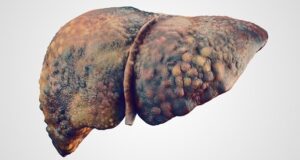
If every American over the age of 40 was as physically active as the top 25% of the population, they could expect to live an extra 5 years, on average, suggest the findings of a modelling study published online in the British Journal of Sports Medicine.
And if the least physically active matched the level of the most physically active, they could live almost 11 years longer, the estimates indicate.
It’s well known that low physical activity levels are associated with a higher risk of diseases, such as heart disease and stroke, as well as premature death, but it’s not clear to what extent low physical activity levels shorten lifespan in specific groups of people or countries, such as the USA.
To try and find out, the researchers created a predictive model to estimate the impact of different levels of increased physical activity on life expectancy.
They based their model on physical activity risk estimates derived from activity tracker data from the 2003–06 National Health and Nutritional Examination Survey for people aged at least 40, plus 2019 population data from the U.S. Census Bureau and deaths recorded in 2017 from the National Centre for Health Statistics.
The total physical activity of the most active 25% of Americans over the age of 40 was equivalent to 160 minutes of normal paced walking at 4.8 km/(3 miles)/hour every day.
Based on this, the researchers estimated that if all the over 40s in the US matched this level of physical activity every day, their average lifespan would increase by just over 5 years, boosting life expectancy at birth to nearly 84 years from 78.6 years.
And if the least physically active 25% of the population matched the levels of the most physically active 25%, they would need to clock up an extra 111 minutes of walking at 4.8 km/hour every day (or equivalent effort). But this could increase their life expectancy by nearly 11 years, the estimates suggest.
The greatest gain in life for every hour walked was seen among the least physically active, among whom each extra hour of walking could add 376 minutes to their life expectancy-;equivalent to around 6 hours. Gains to life expectancy decreased as physical activity rose and on average every extra hour walked could add 169 minutes (2 hours and 49 minutes) to life expectancy.
This is an observational study, and as such, can’t establish cause and effect, and the researchers acknowledge various imitations to their findings. For example, the predictive model they used may have underestimated or overestimated the benefits of physical activity for Americans, because of the research findings on which it drew.
But they nevertheless suggest that increased investment in physical activity promotion and the creation of living environments that foster physical activity have the potential to yield large gains in life expectancy for Americans at the population and individual level.
“Our findings suggest that [physical activity] provides substantially larger health benefits than previously thought, which is due to the use of more precise means of measuring [it],” they write.
“The greatest gain in lifetime per hour of walking was seen for individuals in the lowest activity quartile where an hour’s walk could add an impressive 6 hours to life.”
But the researchers acknowledge that increasing physical activity at the population level is a complex task that requires a systems-wide approach.
“Infrastructure measures that encourage active transport, walkable neighbourhoods, as well as green spaces might be promising approaches to increase physical activity and resultant healthy life expectancy at the population level,” they suggest.
Source:
Journal reference:
Veerman, L., et al. (2024). Physical activity and life expectancy: a life-table analysis. British Journal of Sports Medicine. doi.org/10.1136/bjsports-2024-108125.




